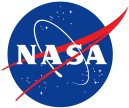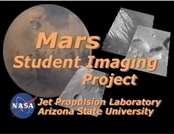 | Mars Student Imaging ProjectThe Mars Student Imaging Project allows students to use a camera on the Odyssey orbiter to take their own image of the red planet and analyze it using the scientific method. |
 | Lesson Plans: 2012 NASA Summer of Innovation CollectionIf you are curious about Mars exploration, this series of activities can help your students learn more about Mars and how we explore worlds beyond our own. These project-based lessons are inquiry-based and standards-aligned, and can be tailored to meet the needs of any classroom. Summer of 2012, NASA's Mars rover Curiosity lands on Mars. Why? We are looking for what life needs: signs of long-term water in the past or present and the right chemical ingredients for life (e.g., carbon-based molecules, the chemical building blocks of life). Use this historic occasion to introduce current real-world science and engineering to your students. |
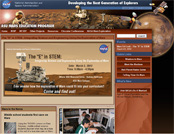 | Mars Educator WorkshopsMars Educator Workshops offer professional development opportunities for teachers. Arizona State University's Mars K-12 Education Program is partnered with JPL to sponsor educator training nationwide. ASU has been conducting outreach since 1992 and is the longest running Mars K-12 education project. Visit their website for current opportunities. |
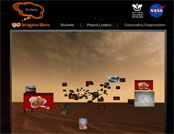 | Imagine MarsImagine Mars is a national arts, science and technology initiative that challenges young people to imagine and design a livable Mars community of the future. |
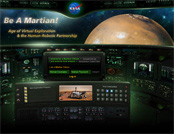 | NASA's Be A MartianMars Robotics Education is a program in development that aligns with technology-education standards. Check back at NASA's Be A Martian for more information. |
Mars Classroom Resources
Earth/Mars Comparison Poster Front
Earth/Mars Comparison Poster Back (contains classroom activities)
Curiosity rover coloring sheet (PDF, 3.89 MB)
Curriculum Supplements
Robotics activities are available. Download the activity summaries (PDF, 1.33 MB) or the full activity set (PDF, 1.08 MB).
The Mars Curriculum Modules are designed to help bring the topic of Mars into your 4th through 12th grade classrooms.
- Exploring Mars (Grades 4-10)
- Students learn how sediment, landforms and drainage patterns provide clues about a planet's geologic history.
- The Grand Canyon of Mars and How it Formed (Grades 6-12)
- Students investigate the formation of Mars' 3000-mile-long valley.
- Is There Water On Mars? (Grades 9-12)
- Can water exist on Mars Today?
NASA Resources and Educational Programs
- Robotics Alliance Project - Robots are a great way to inspire students to learn about math, science, and technology. Enjoy robots in the classroom or find out how students can participate in robotics competitions and other events.
- Learn to study Mars like a scientist.
- This Directory is a convenient way to find NASA space science products for use in classrooms, science museums, planetariums and other settings.
- NASA SpaceLink Mars Educational Materials
- This is the Mars section of NASA's primary site for educators and their students. Bookmark http://www.nasa.gov/audience/foreducators/index.html as your source of NASA educational materials.
- NASA CORE (Central Operation of Resources for Educators)
- This site offers Mars-related audio-visual materials. See Central Operation of Resources for Educators for other resources.
Educational Sites Created by Mars Missions and Instruments
What is Mars' weather today?
The Mars Science Laboratory Curiosity rover is on Mars and is sending back nearly daily martian weather reports from the surface.
See weather report >>
How deep are Mars' valleys and how high are its mountains?
The Mars Orbiter Laser Altimeter on Mars Global Surveyor from NASA/Goddard Space Flight Center is mapping the ups and downs of Mars' surface.
What can we learn from Mars' magnetic field?
The Magnetometer/Electron Reflectometer team on Mars Global Surveyor at NASA/Goddard Space Flight Center can tell you.
What's Mars made of?
The Thermal Emission Spectrometer Thermal Emission Spectrometer on Mars Global Surveyor is finding out! Visit their educational website at Arizona State University.
